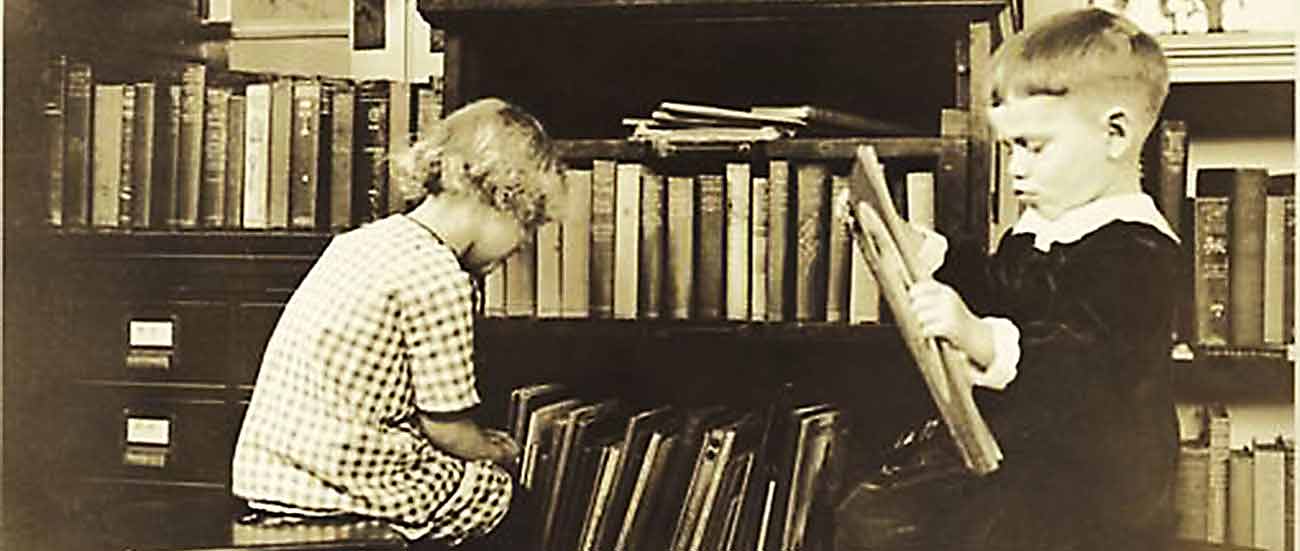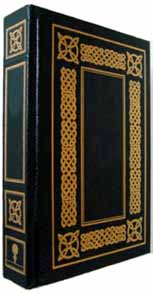Authors of the period struggled to understand the changes occuring in society. While some writers praised the changes others expressed disappointment in the passing of the old ways.

Literature captured the changes in Society
Reading was a popular recreational activity especially during the winter months when other forms of activity were limited. Prior to radio and television most people gained knowledge of the wider world and current events through printed material. Consequently books, newspapers and magazines were an important part of most peoples lives and formed a large part of their wider education. A knowledge of the classics was considered an essential part of a good education and a well-rounded home library considered a sound investment.
Magazines of the period (especially women's magazines) are full of short stories or serials (usually illustrated) to entertain their readers, along with cooking recipes, interior decorating tips, house designs, biographies, crafts, clothing fashions, and advertising. Children's picture story books like "The Little Red Hen" and "Little Black Sambo" (which would probably be considered politically incorrect today) were popular with young children. Winners of Nobel Prize for Literature
Winners of Nobel Prize for Literature
- 1920 Knut Hamsun, Norway
- 1921 Anatole France, France
- 1922 Jacinto Benavente, Spain
- 1923 William Butler Yeats
- 1924 Wladyslaw Reymont, Poland
- 1925 George Bernard Shaw, Ireland
- 1926 Grazia Deledda, Italy
- 1927 Henri Bergson, France
- 1928 Sigrid Undset, Norway
- 1929 Thomas Mann, Germany
- 1930 Sinclair Lewis, United States
- The Waste Land by T.S. Eliot - The ultimate indictment of the modern world's loss of personal, moral, and spiritual values.
- The New Negro by Alain Locke - A hopeful look at the negro in America
- The Great Gatsby by F. Scott Fitzgerald - The American dream that anyone can achieve anything
- Strange Interlude by Eugene O'Neill - A look at 30 years in the life of a modern woman
- The Sun Also Rises by Ernest Hemingway - The lost generation of expatriates
- Babbitt by Sinclair Lewis - A satirical look at small town life
- The Sound and the Fury by William Faulkner - Details the moral decay of the Old South
- Their Eyes Were Watching God by Zora Neale Hurston - Black life in a Black community
In 1921 Frederic G. Melcher had the Newbery Medal designed by René Paul Chambellan. The bronze medal has the winner's name and the date engraved on the back. The American Library Association Executive Board in 1922 delegated to the Children's Librarians' Section the responsibility for selecting the book to receive the Newbery Medal.
- 1922: The Story of Mankind by Hendrik Willem van Loon
- 1923: The Voyages of Doctor Dolittle by Hugh Lofting
- 1924: The Dark Frigate by Charles Hawes
- 1925: Tales from Silver Lands by Charles Finger
- 1926: Shen of the Sea by Arthur Bowie Chrisman
- 1927: Smoky, the Cowhorse by Will James
- 1928: Gay Neck, the Story of a Pigeon by Dhan Gopal Mukerji
- 1929: The Trumpeter of Krakow by Eric P. Kelly
- 1930: Hitty, Her First Hundred Years by Rachel Field
- 1920 (No Award)
- 1921 The Age of Innocence by Edith Wharton
- 1922 Alice Adams by Booth Tarkington
- 1923 One of Ours by Willa Cather
- 1924 The Able McLaughlins by Margaret Wilson
- 1925 So Big by Edna Ferber
- 1926 Arrowsmith by Sinclair Lewis
- 1927 Early Autumn by Louis Bromfield
- 1928 The Bridge of San Luis Rey by Thornton Wilder
- 1929 Scarlet Sister Mary by Julia Peterkin
- 1930 Laughing Boy by Oliver Lafarge
In July 1925, Adolf Hitler published his autobiography. The book, entitled Mein Kampf or My Struggle, was followed by a second volume in 1926, and the People's Edition appeared in 1930. The book was written while Hitler was in prison during his early career and reflected his hatred of Jews, and promoted his belief that Germans were a superior race.
